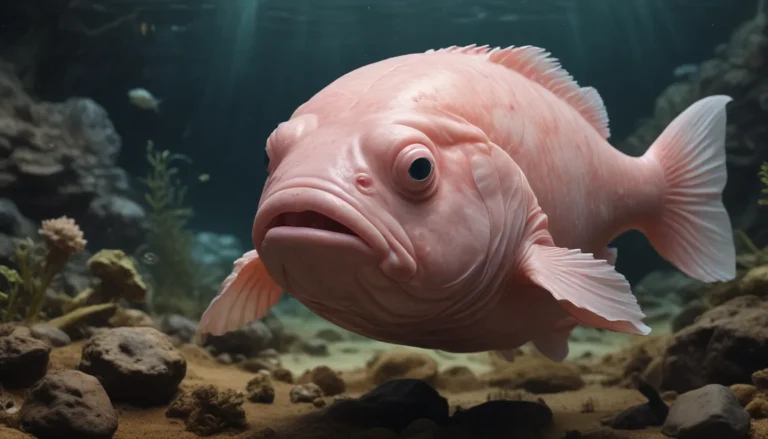The pictures we use in our articles might not show exactly what the words say. We choose these pictures to make you interested in reading more. The pictures work together with the words but don’t take their place. The words still tell you the important facts.
Are you intrigued by the fascinating world of amphibians and reptiles but find yourself confused by their similarities? Let's unravel the mysteries of these two captivating classes of animals and delve into the differences that set them apart.
Unveiling the World of Amphibians
Before delving into the comparisons between amphibians and reptiles, it's essential to grasp the essence of each class.
The term "amphibian" traces its roots back to the Ancient Greek words "amphíbios," which translates to "both kinds of life." This aptly describes these creatures' ability to thrive both in water and on land.
Amphibians, belonging to the class Amphibia, encompass a diverse array of species, with frogs comprising nearly 90% of these amphibious creatures. The modern classification of amphibians includes three primary orders: Anura (frogs), Urodela (salamanders), and Apoda (caecilians).
An Insight Into Reptilian Life
In contrast, reptiles, classified under the Reptilia class, embody a wide spectrum of species, totaling over 10,000 with approximately 2,700 subspecies. This broad category encompasses various reptilian creatures such as turtles, crocodiles, lizards, snakes, and tuataras.
Interestingly, the term "reptile" finds its origins in the Latin word "rēpō," meaning "to creep." However, these creatures are far more than mere creepers; they exhibit remarkable agility in running, climbing, swimming, and leaping.
As we embark on an educational journey contrasting amphibians and reptiles, let's delve deeper into their distinct characteristics and behaviors.
Deciphering the Physical Distinctions
Embracing Their Cold-Blooded Vertebrate Nature
Both amphibians and reptiles fall under the category of cold-blooded vertebrates, sharing the hallmark of having backbones. This defining feature not only protects their spinal cords but also offers structural support for their movements and activities.
Furthermore, these creatures, known as ectothermic animals, rely on external sources to regulate their body temperature. Basking in the sun or immersing themselves in cool water are common practices for both amphibians and reptiles to maintain their optimal body heat.
Distinguishing Amphibians through Their Characteristic Skin
A notable distinction between amphibians and reptiles lies in their skin composition. Amphibians, such as frogs, boast moist skin facilitated by mucus secretion, aiding in oxygen absorption through their skin. This permeable skin, while advantageous for respiration, also renders them sensitive to environmental toxins, making them vital indicators of water quality.
Conversely, reptiles boast dry skin adorned with hard, bony scales called scutes. This protective layer shields reptiles from abrasions and external elements, contributing to their survival in varied habitats, including arid regions.
Respiratory Variances: From Gills to Lungs
Amphibians exhibit diverse respiratory adaptations, with some species possessing gills for underwater breathing while others rely on lungs for air intake. This versatility enables amphibians to thrive in aquatic and terrestrial environments, showcasing their remarkable respiratory flexibility.
In contrast, reptiles exclusively rely on lungs for respiration, lacking gills to facilitate underwater breathing. This distinction underscores the specialized respiratory adaptations that define reptilian life.
Exploring Feeding Habits and Hunting Strategies
The Carnivorous Quest: Amphibians and Reptiles on the Prowl
Both amphibians and reptiles predominantly exhibit carnivorous dietary preferences, preying on smaller animals for sustenance. From snakes and crocodiles to frogs and toads, these creatures showcase their predatory prowess in capturing and devouring their prey.
Amphibians such as frogs thrive on insect-based diets, while reptilian carnivores like snakes employ venomous bites to subdue their quarry. This stark differentiation in hunting strategies illuminates the nuanced complexities of these creatures' predatory behaviors.
Toxic Tales: Amphibian Skin Secretions vs. Reptilian Venom
An intriguing distinction between amphibians and reptiles lies in their defensive mechanisms against predators. Amphibians utilize skin secretions, often imbued with toxins, to thwart adversaries and incapacitate prey. Notable examples include the golden poison frog, renowned for its potent toxins capable of subduing larger predators.
Conversely, reptiles possess specialized salivary glands capable of producing venom, deployed through bites during hunting. This venom serves dual purposes, immobilizing prey and aiding in the digestion process, showcasing the multifaceted nature of reptilian venom.
Navigating Habitats: Amphibians’ Aquatic Affinity and Reptiles’ Terrestrial Tenacity
Terrain Tranquility: Amphibians’ Dual Domain Dexterity
While amphibians predominantly dwell in freshwater environments, some species manifest a partial tolerance for saltwater conditions. Fostering a delicate balance between land and water habitats, amphibians showcase adaptability in navigating diverse terrains.
Reptiles, conversely, display a distinct preference for terrestrial habitats, thriving on dry land and exhibiting minimal reliance on aquatic environments for sustenance. This contrast underscores the unique habitat preferences that distinguish amphibians and reptiles in their ecological niches.
Unveiling Reproductive Revelations: Eggs, Shells, and Offspring
Egg-laying Explorations: Amphibians vs. Reptiles
Amphibians and reptiles share a commonality in egg-laying practices, with both classes typically reproducing through egg deposition. However, the divergent characteristics of these eggs unveil intricate differences between amphibians and reptiles.
Amphibian eggs lack a protective shell, necessitating aquatic environments to prevent desiccation and ensure successful development. In contrast, reptiles lay eggs with sturdy shells, safeguarding the embryos and fostering an environment conducive to hatching.
Societal Skirmishes: Amphibians’ Group Dynamics and Reptiles’ Solitary Stance
Navigating Social Structures: Amphibian Collectives and Reptilian Solitude
Amphibians exhibit gregarious tendencies, often congregating in groups and fostering communal interactions. Frogs, in particular, exemplify social cohesion, residing in collective units and engaging in coordinated behaviors that underscore their affinity for group dynamics.
Conversely, reptiles predominantly display solitary behaviors, favoring independent living arrangements and minimal social interaction. This distinct solitary stance distinguishes reptiles from their more socially inclined amphibian counterparts, emphasizing the diverse social structures within the animal kingdom.
As we unravel the intricate tapestry of amphibians and reptiles, we gain a deeper appreciation for the diverse adaptations and behaviors that define these captivating creatures. Whether navigating aquatic habitats, engaging in predatory pursuits, or thriving in varied ecological niches, amphibians and reptiles exemplify the rich diversity of the natural world.
Explore the boundless wonders of amphibians and reptiles, and embark on a journey of discovery into the enchanting realms of these fascinating creatures. Dive into the depths of their intricacies, unravel the mysteries of their behaviors, and marvel at the unique adaptations that set them apart. Embrace the allure of amphibians and reptiles, and immerse yourself in the captivating world of these extraordinary creatures. As you unravel the labyrinth of amphibians and reptiles, let your curiosity guide you through the maze of their diverse habitats, feeding behaviors, and reproductive strategies. Join us on an adventure of exploration and enlightenment, as we chart the course through the riveting realms of amphibians and reptiles.






